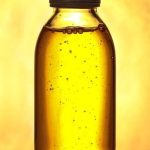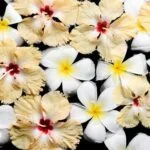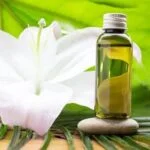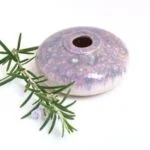Aromatherapy has been used for centuries as a holistic healing treatment, utilizing the natural scents of essential oils to promote relaxation, improve mood, and alleviate certain health conditions. Aromatherapy diffusers are a popular way to disperse these essential oils into the air, allowing users to enjoy their therapeutic benefits.
However, an important question arises: do aromatherapy diffusers leave residue? In this article, we will explore this topic in depth and provide valuable insights into the impact of residue on the effectiveness and safety of aromatherapy diffusers.
Residue in the context of aromatherapy diffusers refers to any leftover substances or buildup that may occur as a result of using essential oils in the diffuser. This can manifest as oil droplets on surfaces surrounding the diffuser or within the device itself. Understanding what residue is and how it can affect the functionality of aromatherapy diffusers is crucial for maintaining their effectiveness.
There are several types of aromatherapy diffusers available, each with its own unique method of dispersing essential oils into the air. From ultrasonic and nebulizing diffusers to heat-based and evaporative models, these devices vary in their mechanisms for creating a fine mist or vapor that carries the scent of the essential oil. It is important to consider how each type of diffuser may contribute to or prevent residue buildup in order to properly maintain them for long-term use.
What Is Residue in the Context of Aromatherapy Diffusers?
Residue in the context of aromatherapy diffusers refers to any leftover particles or buildup that may occur during the diffusion process. This can include essential oil residue, mineral deposits from water, or even dust and debris that can accumulate over time. While residue may not always be visible to the naked eye, it can impact the performance and cleanliness of your diffuser.
Types of residue can vary depending on the type of diffuser being used. For example, ultrasonic and nebulizing diffusers may experience essential oil buildup within the device, while heat-based diffusers may leave behind mineral deposits from the water used in the diffusion process. Regardless of the type of residue, it is important to understand its potential impact on both the effectiveness and safety of your aromatherapy experience.
To prevent residue from forming in your aromatherapy diffuser, there are several proactive measures you can take. First and foremost, always use high-quality essential oils that are free from impurities and additives. Additionally, regularly cleaning your diffuser according to its specific instructions can help minimize residue buildup.
Using distilled water instead of tap water can also reduce mineral deposits and prolong the life of your device. By taking these precautions, you can maintain a clean and efficient aromatherapy diffuser for a more enjoyable experience.
Types of Aromatherapy Diffusers and How They Work
Aromatherapy diffusers are devices that disperse essential oils into the air, allowing their molecules to be inhaled and absorbed by the body. There are several types of aromatherapy diffusers, each with its own unique way of dispersing the essential oils. The most common types include ultrasonic diffusers, nebulizing diffusers, heat diffusers, and evaporative diffusers.
Ultrasonic diffusers use water and ultrasonic waves to disperse the essential oils into the air as a fine mist. Nebulizing diffusers do not require water and instead use pressurized air to break down the essential oils into tiny particles that are then released into the air.
Heat diffusers use heat to evaporate the essential oils and release their aroma into the surrounding environment. Evaporative diffusers use a fan to blow air through a pad or filter that has been soaked in essential oils, causing the oil to evaporate more quickly.
Each type of aromatherapy diffuser works differently and may have different implications for residue buildup. It’s important for users to understand how their specific type of diffuser works in order to properly maintain it and prevent any potential residue buildup.
In terms of residue buildup, some individuals may wonder if using aromatherapy diffusion can lead to an accumulation of oil or other substances on furniture or within the room itself. Since different types of aromatherapy diffusers work distinctively-some using water, others not-each has varying degrees of potential for residue buildup. In general, proper maintenance is key in preventing any form of unsightly or damaging residue from occurring when using these devices.
| Type of Diffuser | Residue Buildup Potential |
|---|---|
| Ultrasonic | Likely minimal due to water dilution |
| Nebulizing | Potential for build-up without regular cleaning |
| Heat | Potential for slight residue on surfaces near device |
| Evaporative | Potential for some residue on nearby surfaces |
Common Misconceptions About Residue and Aromatherapy Diffusers
A common misconception about aromatherapy diffusers is that they leave residue. Many people worry that using these devices in their homes will result in an oily or sticky film on their furniture and walls. However, it is important to understand what residue actually means in the context of aromatherapy diffusers.
In the context of aromatherapy diffusers, residue typically refers to any leftover essential oils or other aromatherapy blends that may accumulate over time. This can occur when the diffuser is not properly cleaned or maintained. It’s important to note that not all types of diffusers leave residue, and different models may require different cleaning methods.
There are several types of aromatherapy diffusers, including ultrasonic, nebulizing, heat, and evaporative diffusers. Each type works differently and may have varying levels of residue buildup. For example, ultrasonic diffusers use water to disperse essential oils into the air as a fine mist, while nebulizing diffusers break down essential oils into a concentrated form without using water. It’s important to choose a diffuser that suits your needs and preferences to minimize any potential residue buildup.
| Type of Diffuser | Potential Residue Buildup |
|---|---|
| Ultrasonic | Limited if regularly cleaned |
| Nebulizing | Minimal if used properly |
| Heat/Evaporative | Potential for more visible residue if not cleaned regularly |
Do Aromatherapy Diffusers Leave Residue? Exploring the Evidence
Aromatherapy diffusers have gained popularity in recent years as a means of promoting relaxation, relieving stress, and enhancing overall well-being. These devices work by dispersing essential oils into the air, allowing individuals to enjoy their therapeutic benefits through inhalation. However, one common concern that many people have is whether aromatherapy diffusers leave residue.
In the context of aromatherapy diffusers, residue refers to any leftover particles or deposits that may accumulate within the device or on surrounding surfaces as a result of using essential oils. This can include oil droplets, waxy build-up, or dust and debris that may adhere to the diffuser over time.
There are several different types of aromatherapy diffusers available on the market, each with its own unique method of dispersing essential oils into the air. These include ultrasonic diffusers, nebulizing diffusers, heat diffusers, and evaporative diffusers. Each type operates differently and has varying effects on the presence of residue.
When it comes to the question of whether aromatherapy diffusers leave residue, the answer is not always straightforward. While some types of diffusers may be more prone to leaving residue than others, proper maintenance and cleaning can significantly reduce the likelihood of accumulation. Additionally,”diffusing high-quality essential oils from reputable sources can also contribute to less residue left behind”.
How to Prevent and Clean Residue in Aromatherapy Diffusers
Aromatherapy diffusers are a popular way to enjoy the benefits of essential oils, but one concern many people have is whether or not they leave residue. In this section, we’ll explore some tips for preventing and cleaning residue in aromatherapy diffusers.
Preventing Residue
One of the best ways to prevent residue in your aromatherapy diffuser is to use high-quality, pure essential oils. Lower quality oils or those that contain synthetic ingredients can leave behind a filmy residue that can clog the diffuser and affect its performance. Additionally, be sure to clean your diffuser regularly and according to the manufacturer’s instructions. This will help prevent any buildup that could lead to residue.
Cleaning Your Aromatherapy Diffuser
To clean your aromatherapy diffuser, start by emptying any remaining water and oil from the reservoir. Use a soft cloth or cotton swab dipped in rubbing alcohol to gently wipe away any residue on the inside of the reservoir and around the mist outlet.
Be sure to also clean the ultrasonic plate if you have an ultrasonic diffuser, as this is where residue is most likely to build up. Finish by rinsing the reservoir with plain water and drying it thoroughly before using it again.
Importance of Proper Maintenance
Regular maintenance and cleaning of your aromatherapy diffuser not only helps prevent residue from building up but also ensures that it continues to function effectively and safely. Neglecting proper care can lead to performance issues and potentially impact the therapeutic benefits of using essential oils through diffusion. By taking the time to properly maintain and clean your diffuser, you can enjoy all the benefits of aromatherapy without worrying about residue affecting its performance or safety.
The Impact of Residue on the Effectiveness and Safety of Aromatherapy Diffusers
Aromatherapy has gained popularity in recent years as a natural way to promote relaxation, improve mood, and even alleviate certain health symptoms. A key component of aromatherapy is the use of essential oils, which are often dispersed into the air using diffusers. However, one common concern among users is whether these diffusers leave any residue that could impact their effectiveness or safety.
Understanding Residue in Aromatherapy Diffusers
In the context of aromatherapy diffusers, residue refers to any leftover particles or buildup that can accumulate within the diffuser over time. This can include oil residue, mineral deposits from water used in certain types of diffusers, and even dust or dirt that may enter the device during use. Residue can potentially impact the functionality of the diffuser and may also pose safety concerns if not properly addressed.
The Impact on Effectiveness and Safety
Residue in aromatherapy diffusers can have various effects on both their effectiveness and safety. Over time, built-up residue can clog the device’s mechanisms, leading to decreased efficiency in dispersing essential oils into the air.
Additionally, if not cleaned regularly, residue can become a breeding ground for bacteria and mold, which can compromise air quality and pose potential health risks to users. As such, it is important for users to be mindful of the presence of residue and take proactive measures to prevent its accumulation.
Conclusion
In conclusion, the maintenance and care of aromatherapy diffusers are crucial for ensuring their effectiveness and safety. While there are different types of diffusers available, they all have the potential to leave residue if not properly maintained. Understanding what residue is in the context of aromatherapy diffusers and how it can impact their performance is important for users to maximize the benefits of using these devices.
Proper cleaning and regular maintenance are key to preventing residue buildup in aromatherapy diffusers. By following manufacturer’s instructions and using natural cleaning solutions, users can ensure that their diffusers remain clean and free of any residue. Additionally, being aware of common misconceptions about residue in diffusers can help dispel myths and promote proper care practices among users.
Overall, maintaining a clean and residue-free aromatherapy diffuser is essential for prolonging its lifespan and enjoying the full benefits of aromatherapy. By taking the time to clean and care for these devices, users can ensure that they continue to provide therapeutic effects without any compromise to their performance or safety. Therefore, proper maintenance and care should always be prioritized by those who use aromatherapy diffusers as part of their wellness routine.
Frequently Asked Questions
Is There a Diffuser That Doesn’t Leave Residue?
Yes, there are diffusers that don’t leave residue. Ultrasonic diffusers, for example, create a fine mist without using heat or chemicals, making them less likely to leave residue on surfaces.
Do You Have to Clean Diffuser After Each Use?
Whether you have to clean your diffuser after each use depends on how frequently you use it and what types of oils you use. If you use strong-smelling oils or use the diffuser often, it’s a good idea to clean it regularly to prevent residue buildup.
How Do You Remove Oil Residue From a Diffuser?
To remove oil residue from a diffuser, start by unplugging the device and emptying any remaining water and oil. Then, wipe down the interior with a cloth or cotton swab dipped in white vinegar or rubbing alcohol. Be sure to clean the ultrasonic plate as well. Lastly, rinse with clean water and dry thoroughly before the next use.

Are you looking for a natural way to improve your health and wellbeing?
If so, aromatherapy may be the answer for you.





